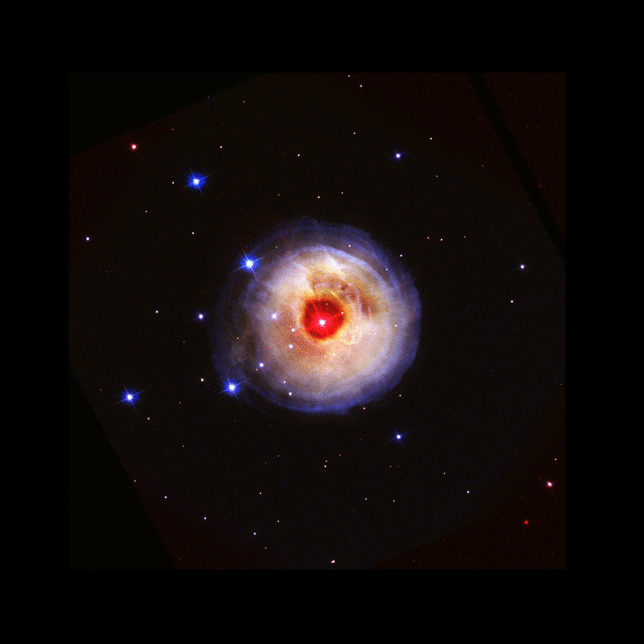
 |
One lovely phenomenon among the many viewed by today's astronomers with large telescopes on the ground and (for a while, before the US started to abandon scientific research) in earth orbit is the light echo.
If you were one of the lucky few who took physics in high school or even middle school, in hopes of learning a bit about how the incredible world you live in works, you will recall that if you have a light bulb, which of course emits light in almost all directions, and you want to get the light to move all in the same direction, in a beam, you place the bulb at the center of a parabolic reflector. The headlights of your automobile are the standard example.
Well, imagine you have a star which suddenly explodes violently, like a giant cosmic flashbulb. And suppose the star is already surrounded by many layers of gas and dust from explosions in the distant past. An astronomer who views the latest blast directly from the star then waits patiently. A year or so later, he will see a certain region of the gas and dust light up in the lovely phenomenon known as a "light echo." The region being viewed in this echo is roughly parabolic, with the star at the focus. As time goes on, echoes are seen from larger and larger parabolic regions. Every reflecting point on a given parabola is in such a position relative to star and earth that light from the starburst, reflecting from the point, takes the same time to reach earth. Light echoes were first noticed by astronomers as far back as 1901.

Echoes are seen around unstable stars, like the red supergiant in the image at the top of the page, and also around novae and supernovae. A more recent link is here. When several images, each taken about a year apart, are assembled into a "movie" gif, the sight is awesome. By the way, sometimes a "double echo" is seen. Can you make a guess as to how this happens?